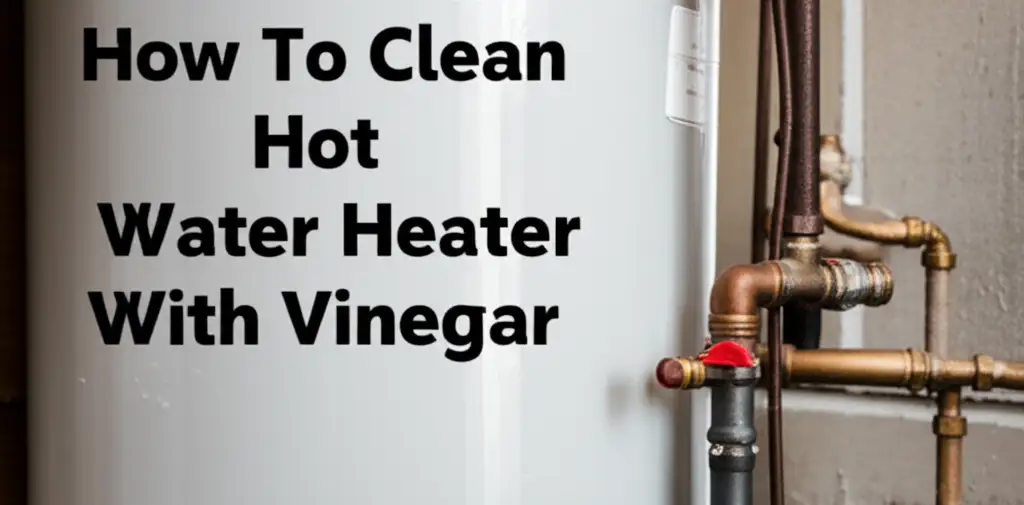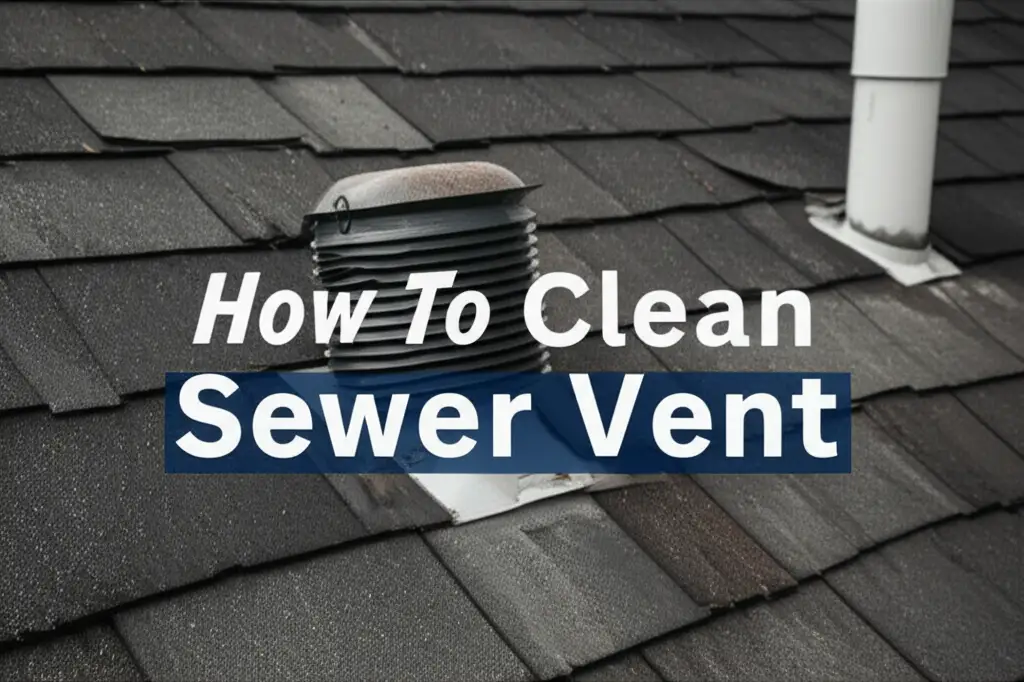· Home Maintenance · 12 min read
How To Clean Sediment From Water Lines

How To Clean Sediment From Water Lines
Have you noticed your water pressure dropping? Does your tap water look cloudy or discolored? These are common signs of sediment building up in your water lines. Sediment can be a real nuisance. It affects water flow and can even damage appliances. I know how frustrating it is when your shower stream becomes weak.
Cleaning sediment from water lines restores proper water flow. It also protects your plumbing system and appliances. This article explains how to tackle sediment buildup. We will cover identifying the problem, preparing your system, and using effective cleaning methods like flushing and descaling. I will also discuss prevention tips. You will learn when professional help is necessary.
Takeaway
- Identify sediment issues by checking water pressure and color.
- Prepare your plumbing system by shutting off water and draining lines.
- Flush lines regularly to remove loose sediment.
- Descale with vinegar for stubborn mineral deposits.
- Install filters and maintain water sources to prevent future buildup.
To clean sediment from water lines, you can flush the pipes with high-pressure water to dislodge loose particles. For stubborn mineral deposits, descaling with an acidic solution like vinegar or citric acid is effective. Regular maintenance and proper filtration help prevent future accumulation.
Understanding Sediment Buildup in Water Lines
Sediment in water lines is a common problem. It happens when tiny particles accumulate inside pipes. These particles can include rust flakes, sand, silt, or mineral deposits. Hard water often causes mineral buildup. This happens when water has high levels of dissolved calcium and magnesium. Rust comes from old, corroding iron pipes. Sand and silt can enter from well water sources.
This buildup impacts your plumbing in many ways. It reduces water flow. You might notice low water pressure at faucets or in your shower. Sediment can also clog aerators and showerheads. Appliances like washing machines and dishwashers can suffer damage. The sediment acts like sandpaper. It wears down internal components. Sediment also collects in your water heater, making it less efficient. Cleaning sediment from a water heater helps improve its performance and lifespan. Understanding these causes helps you choose the right cleaning method.
Over time, sediment forms a hard crust inside pipes. This crust restricts water passage. It can also create rough surfaces where more particles can cling. Water quality also suffers. The water might appear cloudy, murky, or rusty. This is especially true after plumbing work or when water flow changes quickly. Addressing sediment promptly saves you from larger plumbing problems.
Knowing the type of sediment helps with cleaning. Iron sediment, or rust, often gives water a reddish-brown tint. Mineral deposits from hard water leave white or off-white residues. These deposits are lime scale. Softening your water can reduce this specific type of buildup. Regular maintenance is key to manage sediment.
Signs You Need to Clean Sediment from Water Lines
Recognizing the signs of sediment buildup is important. Early detection can prevent more severe problems. I pay attention to changes in my home’s water system. One of the most obvious signs is a drop in water pressure. If your shower is weaker or your faucets flow slower, sediment might be blocking the pipes. This reduction in flow occurs because the inside diameter of the pipes shrinks.
Another clear indicator is discolored water. Water that looks cloudy, rusty, or gritty usually means sediment is present. This is particularly noticeable when you first turn on the tap after a period of inactivity. The color can range from a light milky appearance to a deep reddish-brown. This happens as water dislodges and carries accumulated particles. If you see brown or orange water, it might be rust.
Strange noises from your pipes or water heater also suggest sediment. Rattling, banging, or rumbling sounds often come from sediment moving around. In water heaters, sediment can cause a popping sound as it heats up. Appliances connected to your water lines might also show signs. For instance, your washing machine might fill slowly. Or, your dishwasher might leave spots on dishes.
You might also notice clogged fixture screens. Faucet aerators and showerheads become blocked with small particles. Cleaning hard water from a shower head is a common task when sediment is present. If you frequently need to clean these screens, it confirms sediment is in your water lines. Ignoring these signs can lead to costly repairs. It is best to act once you notice any of these symptoms.
Preparation Before Cleaning Water Lines
Proper preparation is crucial before you clean sediment from water lines. It ensures safety and effectiveness. I always gather my tools first. You will need buckets, towels, adjustable wrenches, and possibly a garden hose. Safety glasses are also a good idea. Having everything ready saves time and hassle during the cleaning process.
First, locate your main water shut-off valve. This valve controls all water entering your home. Turn it off completely. This stops water flow and prevents flooding. Next, open all faucets and flush all toilets in your house. This helps drain water from the pipes. Start with the highest faucets and move to the lowest. This allows gravity to assist in draining the system.
Draining the water lines is an important step. It creates space for the cleaning solution or allows for effective flushing. Be ready for some water to come out, especially from lower fixtures. Having buckets and towels nearby is essential for this step. If you have a water heater, consider draining it as well. Draining your hot water heater with vinegar can remove internal sediment and prepare it for line cleaning.
Disconnecting specific fixtures might be necessary for some methods. For example, you may need to disconnect a washing machine hose to flush that line directly. Ensure all connections are secure when you reattach them. Always check for leaks after reassembling. Being methodical in your preparation sets the stage for a successful cleaning job.
Flushing Your Water Lines to Remove Sediment
Flushing your water lines is the simplest way to clean sediment. This method uses water pressure to push out loose particles. It works best for lighter sediment buildup. Start by ensuring your main water supply is still off. Also, make sure all faucets remain open. This setup helps create a clear path for the flushed water.
I usually start flushing from the lowest point in the house. This is often an outdoor spigot or a utility sink faucet in the basement. Attach a garden hose to this faucet. Direct the other end of the hose to a drain or outside. This prevents dirty water from entering your home’s drainage system. Slowly turn on your main water supply.
As the water flows, you will see discolored water exit the hose. It might contain rust, sand, or other grit. Let the water run until it appears clear. This can take several minutes, depending on the amount of sediment. Once clear, shut off the main water supply again. Then, close the lowest faucet you just flushed.
Move to the next lowest faucet in your home. Repeat the flushing process. Systematically work your way up to the highest faucets. Flush cold water lines first. Once cold lines are clear, repeat the process for hot water lines if your water heater has been drained and refilled. This thorough approach helps clean sediment from all sections of your water lines. This method is effective for routine maintenance.
Descaling Water Lines for Stubborn Sediment
Sometimes, flushing alone is not enough. Stubborn mineral deposits, also known as scale, cling tightly to pipe walls. For these, a descaling solution is necessary. Vinegar is a common and effective household descaler. Citric acid powder mixed with water also works well. These mild acids dissolve the mineral buildup without harming pipes.
To descale your entire home’s water lines, you will need a large amount of solution. This often requires a dedicated pump and temporary bypass lines. This setup circulates the descaling solution through your plumbing system. However, this full-system approach is complex for DIY. I recommend descaling specific fixtures or sections if you are doing it yourself. For instance, you can disconnect flexible supply lines to a faucet or toilet. Then, soak them in vinegar.
For an entire house, you might need to introduce the solution through your main water line. Some homeowners use a water heater drain valve to introduce vinegar. You would first drain your water heater. Then, fill it with a diluted vinegar solution. Turn on hot water faucets to draw the solution into your hot water lines. Let it sit for several hours or overnight.
After the soaking period, flush the entire system thoroughly. Turn off the main water supply first. Drain all remaining descaling solution. Then, turn on the main water supply slowly. Open all faucets to flush out the dissolved sediment and solution. Continue flushing until water runs clear and has no vinegar smell. This can take a lot of water. Descaling effectively removes calcium and magnesium deposits.
Addressing Sediment at the Source and Prevention
Cleaning sediment from water lines is important. Preventing future buildup is even better. Addressing the source of sediment is a smart long-term strategy. If your water comes from a well, sediment can enter from sand, silt, or rust. Cleaning sediment out of a well regularly helps. A well might need a professional to remove accumulated material.
Installing a whole-house water filter is a powerful preventative measure. These filters capture particles before they enter your home’s plumbing. They come in various types, including sediment filters, carbon filters, and water softeners. A sediment filter specifically targets physical particles. It catches sand, rust, and silt. Water softeners reduce the mineral content that causes scale buildup. Regularly replacing or cleaning filter cartridges is important. Cleaning an under-sink water filter extends its life.
Regular maintenance also plays a role. Periodically flushing your water heater helps remove sediment before it can enter your lines. Draining it once a year is a good habit. Checking your water source for issues, like corroding pipes leading to your home, can also prevent problems. Investing in water quality solutions improves your overall plumbing health.
Consider your pipe material. Older homes might have galvanized steel pipes. These are prone to rust and corrosion, which creates sediment. Replacing old pipes with copper or PEX can eliminate this source of sediment. This is a larger project but offers a permanent solution. Prevention is always less costly and less disruptive than reactive cleaning.
When to Call a Professional for Water Line Sediment
While many sediment issues are solvable with DIY methods, some situations require a professional. Knowing when to call an expert saves you time, frustration, and potential damage. If you have tried flushing and descaling your water lines, but the problem persists, it’s a sign. Persistent low water pressure or discolored water suggests deep-seated clogs. These often need specialized equipment.
Old or corroded piping systems also warrant professional attention. Galvanized pipes, common in older homes, often have heavy internal rust buildup. Aggressive DIY cleaning might damage these fragile pipes. A professional plumber can assess the pipe condition. They can recommend the best course of action. This might include hydro-jetting or even pipe replacement.
Complex plumbing layouts make DIY cleaning difficult. If your home has multiple bathrooms, long pipe runs, or unusual configurations, accessing all areas can be challenging. Professionals have the tools and experience to navigate these systems effectively. They can ensure thorough cleaning without missing sections. I always recommend calling a professional for significant or widespread issues.
Hydro-jetting is a powerful method professionals use. It employs high-pressure water streams to blast away stubborn sediment and blockages. This method is highly effective for severe clogs. Professionals also have access to chemical descalers that are stronger than household options. They know how to use these safely. If you lack confidence or encounter unexpected problems during DIY cleaning, contact a licensed plumber. They provide safe and lasting solutions.
FAQ Section
How often should I clean sediment from water lines? The frequency depends on your water quality. If you have hard water or well water, annual flushing is a good practice. For municipal water, every 2-3 years might be sufficient. If you notice reduced water pressure or discolored water, clean lines immediately. Regular checks help prevent severe buildup.
Can sediment damage my pipes? Yes, sediment can damage pipes over time. Abrasive particles can wear down pipe interiors. Mineral deposits create scale that reduces pipe diameter and restricts flow. This can increase pressure within the system, leading to leaks or bursts. Sediment also accelerates corrosion in metal pipes.
What causes sediment in water lines? Sediment comes from various sources. Hard water, rich in calcium and magnesium, forms mineral scale. Rust flakes off old galvanized or iron pipes. Sand, silt, and clay can enter from well water sources. Improperly maintained water heaters also contribute sediment. Filtration issues can allow particles to pass through.
Is sediment in water harmful to drink? Generally, small amounts of sediment like mineral deposits are not directly harmful to drink. However, rust particles or organic matter from a well can affect water quality. Sediment often indicates other underlying issues, such as pipe corrosion or bacterial growth. It is best to address the source to ensure safe drinking water.
Can I use bleach to clean water lines? Using bleach to clean water lines is not recommended for sediment removal. Bleach is a disinfectant, not a descaler. It will not dissolve mineral deposits or rust. Bleach can also be corrosive to some pipe materials. It also leaves a strong odor and taste in the water. Stick to mechanical flushing or acidic descalers like vinegar.
Conclusion
Cleaning sediment from water lines is an important task for any homeowner. It ensures good water pressure and extends the life of your plumbing system and appliances. I have experienced the frustration of low water flow myself. Knowing how to address sediment buildup empowers you to maintain your home effectively.
We covered identifying the common signs of sediment, preparing your system, and using effective cleaning methods. Simple flushing can remove loose particles. Descaling with vinegar or citric acid handles stubborn mineral deposits. Remember to address the source of sediment, like installing water filters or maintaining your well. If problems persist or seem too complex, contacting a professional plumber is always a wise choice. Take action today to enjoy clean, clear, and high-pressure water throughout your home.
- water line cleaning
- sediment removal
- plumbing maintenance
- hard water solutions
- pipe flushing




